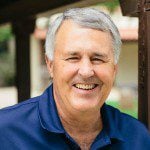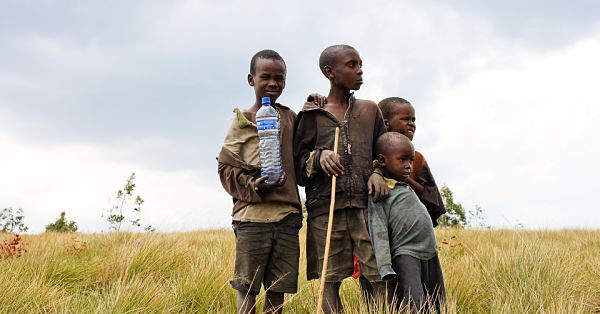by Gary Edmonds
Increasing food security, water security, and a place to keep a child warm and safe — we see these as the church mission model for the 21st Century. Some of the most successful and compassionate work the U.S. public and private sectors undertake – often together — is that which secures mothers and fathers with the ability to care for their children into the future. Anyone who is a parent knows, there is nothing more important than meeting this most basic need –- security for our children.
The brutality of extreme poverty denies all of us human security, and security is much more than a buzzword these days. Robbing parents of hope, and children of the ability to grow and to live with purpose and dignity, breed anger and despair. It leaves people open to violence.
Even though missions today go places where churches have long taken root, the idea of sending a few to train others remains a 2000-year-old solid strategy in a world where 1.6 billion people barely survive on less than $1.25 per day. I know that whether my organization, Food for the Hungry, is part of a church mission or part of U.S. government health, humanitarian and development assistance, we are helping the neediest, and that keeps all our hearts open to what is needed in the world.
In the words of Expedition Church’s Senior Pastor, Donovan Christian, his church mission work has “helped us to be less inward focused” and helps keep the church’s heart soft and tender to what God is trying to do in the world. Our partnership with Expedition Church in Payson, Arizona, started seven years ago, reaches halfway around the world, and is a model for 21st Century mission work. Expedition heeded their pastors call to sponsor not one, but every child in the rural community of Rwimbogo, Rwanda – that’s close to 120 kids.
Lance Chabot, Expedition’s youth minister, wasn’t so sure that his family’s small monthly donation could have much of an impact. But two years ago, he went to Rwimbogo and met a widow who had been living with her four children in a tiny, 6×6 mud brick structure. As a widow, Leonita had been the recipient of one of ten houses Expedition helped to fund, but she couldn’t afford a single piece of furniture. She wanted to find a way to earn an income. With an interest in sewing, she thought she could mend and sell clothes. Expedition helped make that happen with a sewing machine.
“By the time we got back this year and visited her again, she had story after story about how our involvement totally transformed her house,” says Pastor Chabot. Leonita’s sewing business enabled her to buy two beds, with mattresses, five sitting chairs and a table. Her son uses one of the 100 bicycles, purchased for the community, to haul clean water for the family, go to school, get sewing materials, and take goods to market. Leonita is now training other widows in the community to sew.
Our work is neither temporary nor is it creating dependency. Quite the opposite. Whether we work with church missions or partner with a U.S government agency, we implement a 10- 15-year strategy that will graduate an entire community from aid recipient to sustainable independence.
Rwimbogo’s graduation is just a few years away. Over these seven years, we’ve provided microfinance opportunities with animals and agricultural support, which provides nutrition and income from animal milk, and increase fruit and vegetable production with fertilizer from the cows and goats. Surpluses are sold at market and animal offspring are given to neighbors. The maize farmers’ cooperative, which now has an office, accountant and agronomist, has greatly increased agricultural production.
Better nutrition means healthier kids and better-educated kids. All children, from birth to five, receive vaccinations. Expedition sponsored a clean water source, latrines and desks for the school and a dormitory for teachers who had to walk long distances. Teaching days are now longer and more productive, and girls can stay in school because they don’t have to leave to meet their sanitation needs or help their mothers fetch water long distances. Better-fed students are resulting in better test scores, according to the school’s headmaster.
Speaking about his own children in Arizona, Pastor Chabot says, “There’s this connection of family – in the spiritual sense. We sit down and read letters when they come in. My kids are engaged in a relationship with kids in a different circumstance in a different part of the world. It’s a connection that I don’t think you get any other way.”
Indeed, this new model for 21st century missions helps build global relationships we cannot get any other way.
For more information about the new model for missions, download the free eBook, The Remarkable Truth About Ending Extreme Poverty to begin to understand the root causes of poverty, solutions that create independence and how your church can have a deeper impact.

Gary Edmonds is President and CEO of Food for the Hungry, a relief and development organization of Christian motivation that works in Asia, Africa and Latin America.














